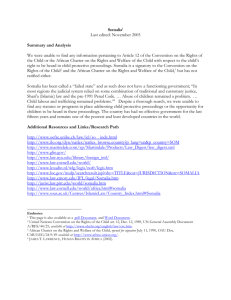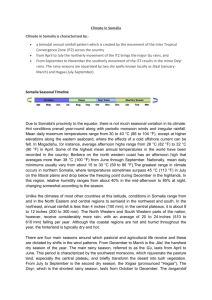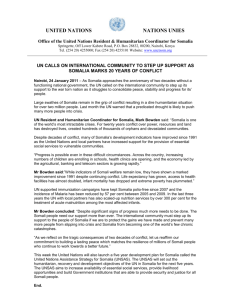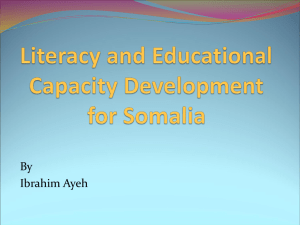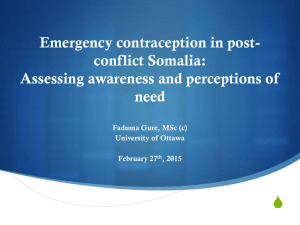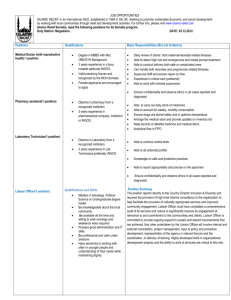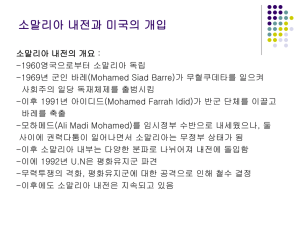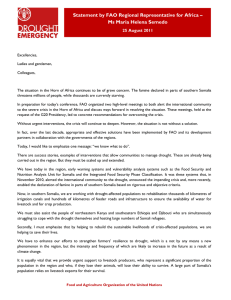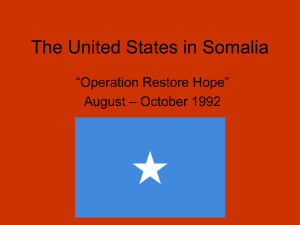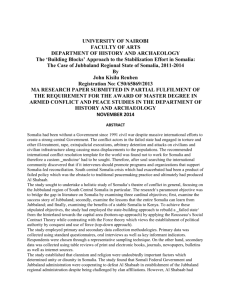Embargoed until Wednesday, October, 7th at 0:01am POSSIBLE
advertisement
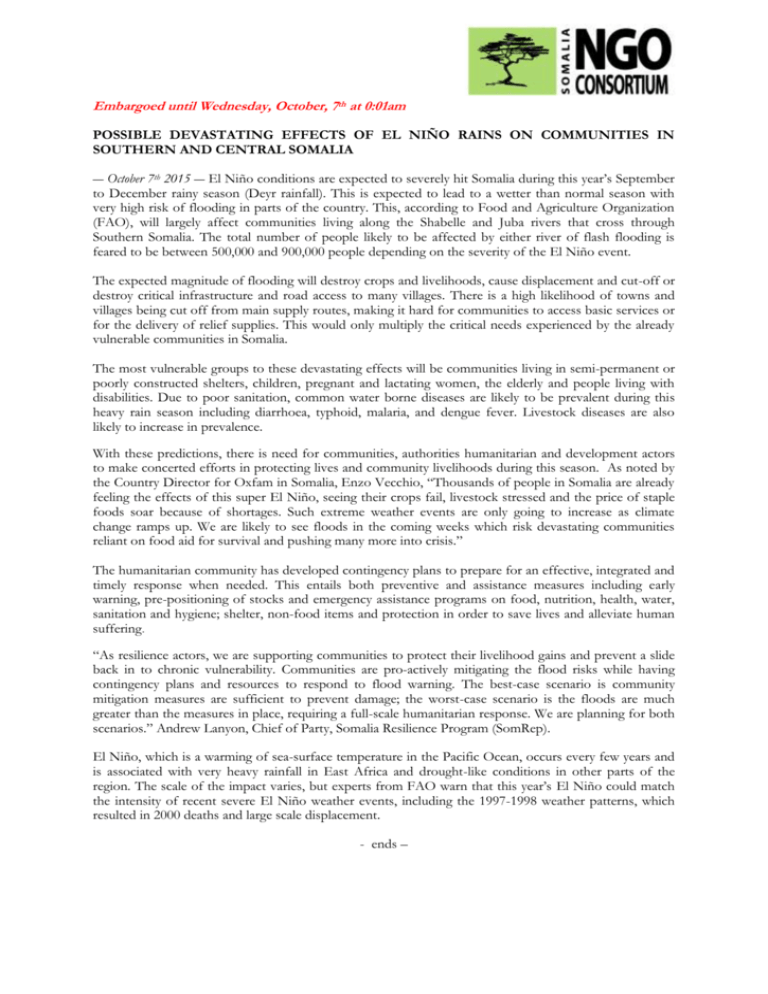
Embargoed until Wednesday, October, 7th at 0:01am POSSIBLE DEVASTATING EFFECTS OF EL NIÑO RAINS ON COMMUNITIES IN SOUTHERN AND CENTRAL SOMALIA ― October 7th 2015 ― El Niño conditions are expected to severely hit Somalia during this year’s September to December rainy season (Deyr rainfall). This is expected to lead to a wetter than normal season with very high risk of flooding in parts of the country. This, according to Food and Agriculture Organization (FAO), will largely affect communities living along the Shabelle and Juba rivers that cross through Southern Somalia. The total number of people likely to be affected by either river of flash flooding is feared to be between 500,000 and 900,000 people depending on the severity of the El Niño event. The expected magnitude of flooding will destroy crops and livelihoods, cause displacement and cut-off or destroy critical infrastructure and road access to many villages. There is a high likelihood of towns and villages being cut off from main supply routes, making it hard for communities to access basic services or for the delivery of relief supplies. This would only multiply the critical needs experienced by the already vulnerable communities in Somalia. The most vulnerable groups to these devastating effects will be communities living in semi-permanent or poorly constructed shelters, children, pregnant and lactating women, the elderly and people living with disabilities. Due to poor sanitation, common water borne diseases are likely to be prevalent during this heavy rain season including diarrhoea, typhoid, malaria, and dengue fever. Livestock diseases are also likely to increase in prevalence. With these predictions, there is need for communities, authorities humanitarian and development actors to make concerted efforts in protecting lives and community livelihoods during this season. As noted by the Country Director for Oxfam in Somalia, Enzo Vecchio, “Thousands of people in Somalia are already feeling the effects of this super El Niño, seeing their crops fail, livestock stressed and the price of staple foods soar because of shortages. Such extreme weather events are only going to increase as climate change ramps up. We are likely to see floods in the coming weeks which risk devastating communities reliant on food aid for survival and pushing many more into crisis.” The humanitarian community has developed contingency plans to prepare for an effective, integrated and timely response when needed. This entails both preventive and assistance measures including early warning, pre-positioning of stocks and emergency assistance programs on food, nutrition, health, water, sanitation and hygiene; shelter, non-food items and protection in order to save lives and alleviate human suffering. “As resilience actors, we are supporting communities to protect their livelihood gains and prevent a slide back in to chronic vulnerability. Communities are pro-actively mitigating the flood risks while having contingency plans and resources to respond to flood warning. The best-case scenario is community mitigation measures are sufficient to prevent damage; the worst-case scenario is the floods are much greater than the measures in place, requiring a full-scale humanitarian response. We are planning for both scenarios.” Andrew Lanyon, Chief of Party, Somalia Resilience Program (SomRep). El Niño, which is a warming of sea-surface temperature in the Pacific Ocean, occurs every few years and is associated with very heavy rainfall in East Africa and drought-like conditions in other parts of the region. The scale of the impact varies, but experts from FAO warn that this year’s El Niño could match the intensity of recent severe El Niño weather events, including the 1997-1998 weather patterns, which resulted in 2000 deaths and large scale displacement. - ends – Signatory agencies For more information or to arrange interviews, contact The Somalia NGO Consortium is a network of Local and International NGOs working Somalia and Somaliland.
